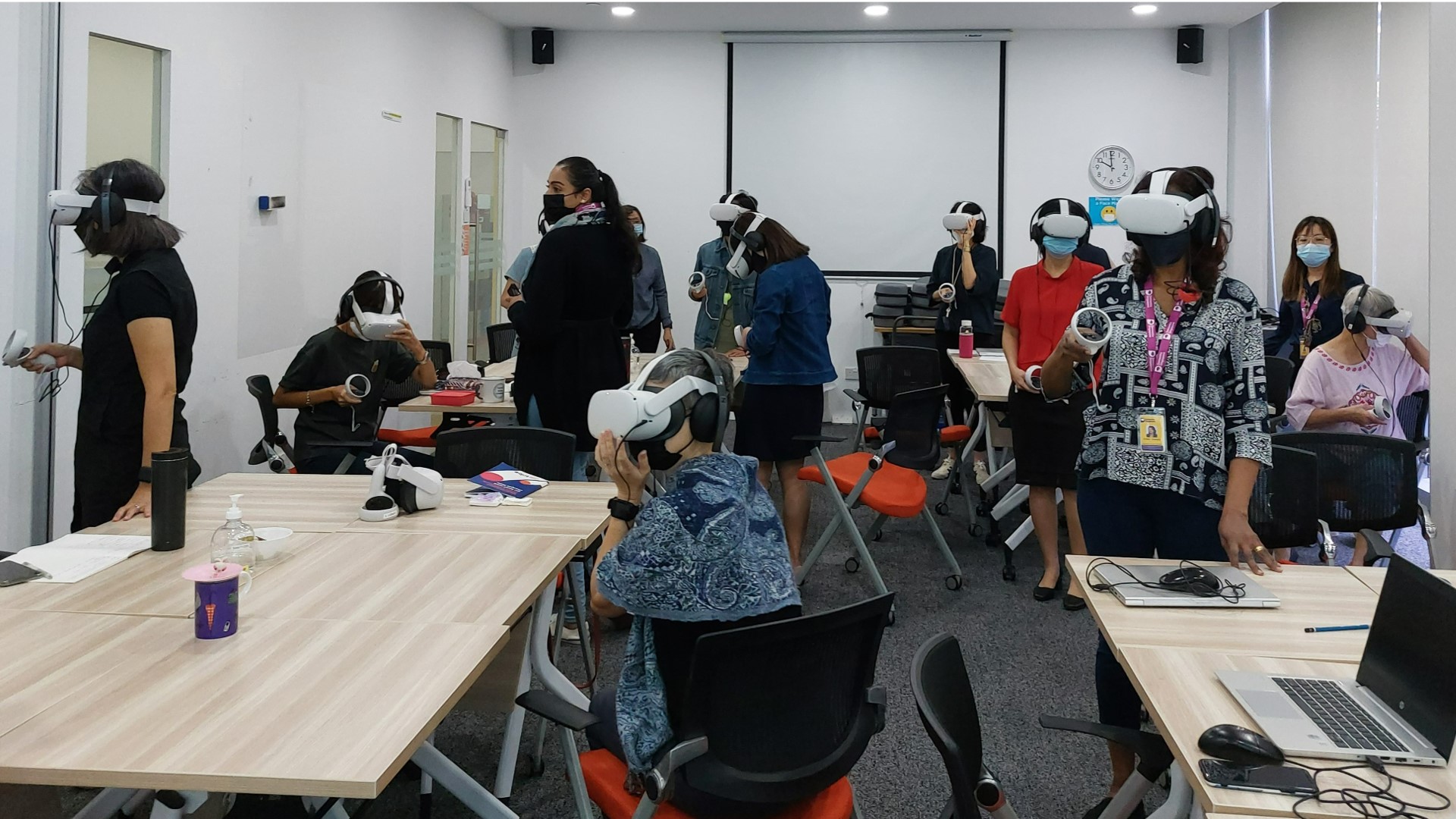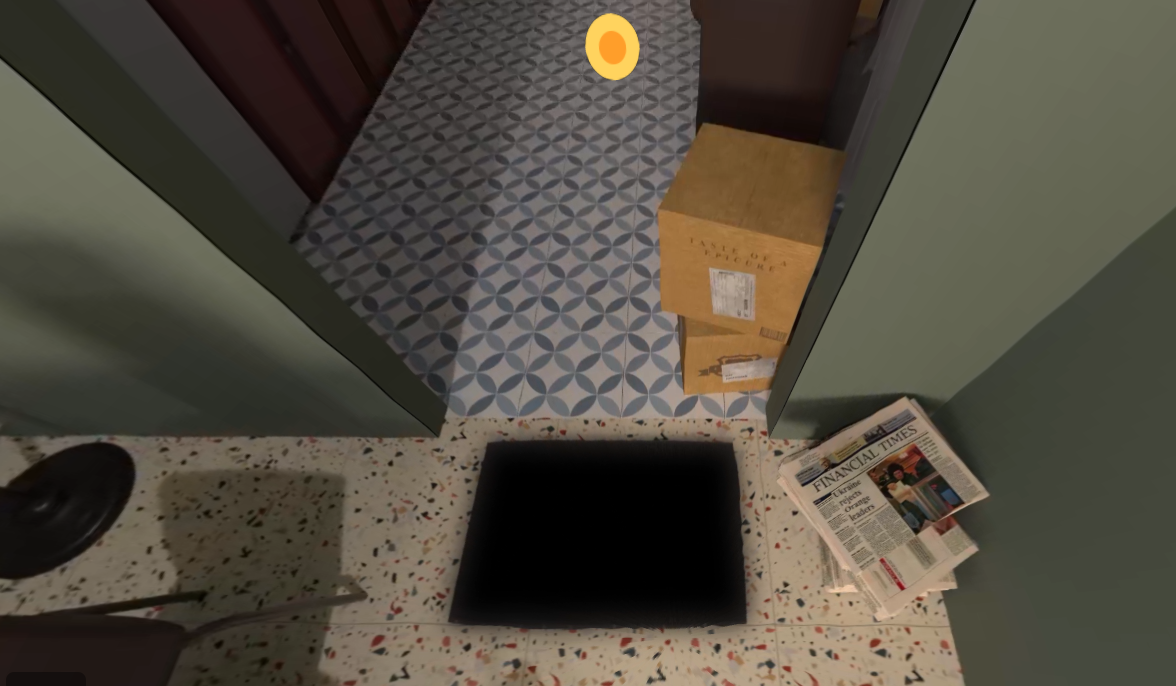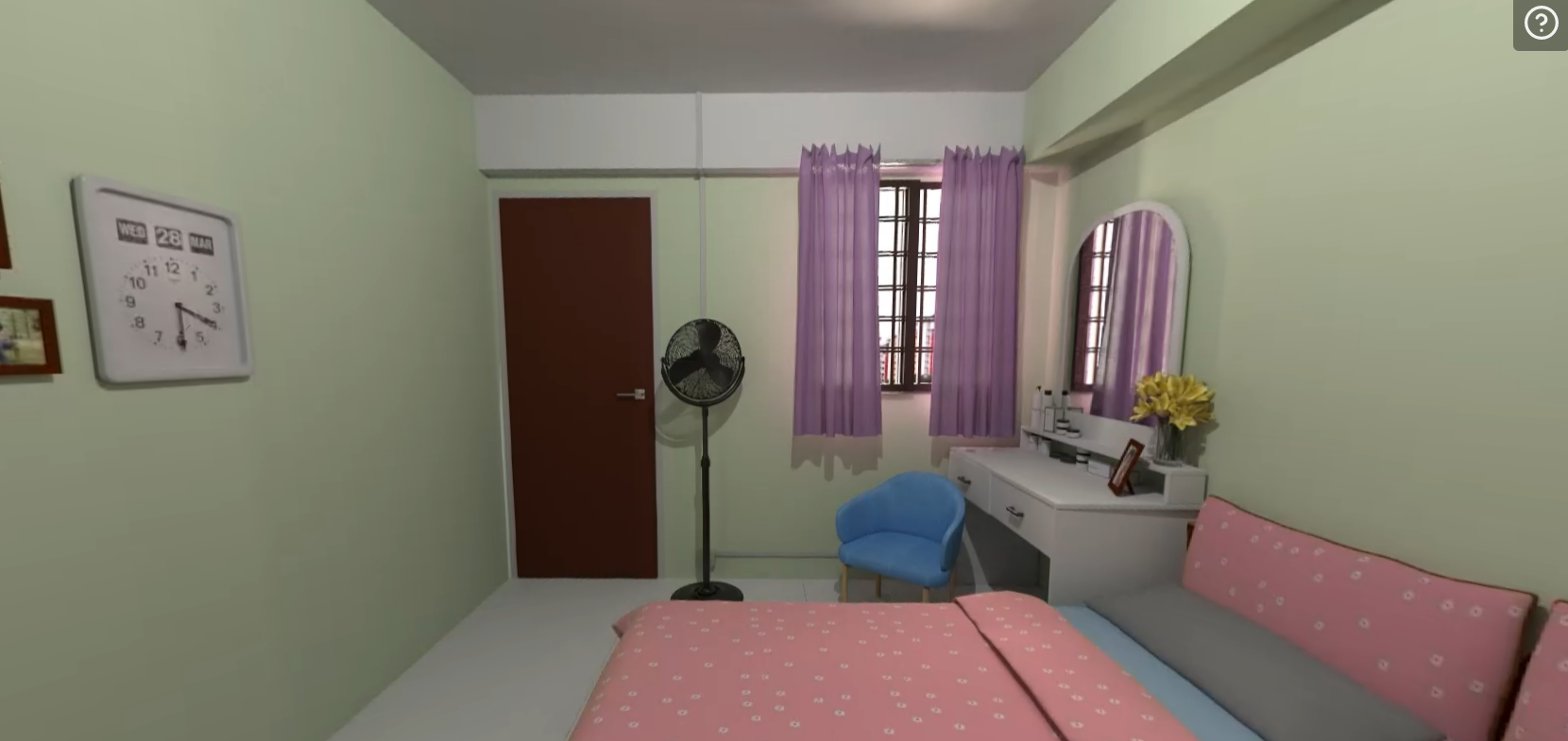Virtual Reality (VR) Dementia Awareness training offers real-world knowledge of the impact of this condition and provides a greater call for empathy.

In a recent Dementia Singapore immersive training workshop, participants underwent the Virtual Reality (VR) simulation experience where VR goggles are used to stimulate the experiences of a person living with dementia. (Photo: Dementia Singapore)
An astounding sense of fear, confusion and loss of spatial awareness flooded the consciousness of Ms Han Bi Guang. Not that she was sick, she was just virtually walking in the shoes of an Australian man living with dementia through an immersive simulation.
“As I walk to go to the bathroom, I am already losing awareness and forgetting things,” she said of her experience embodying the man, who was struggling to get even his basic needs met. “There was one moment, he just decided to pee there because he mistook the laundry basket as the toilet bowl.”
This gave her a deeper understanding of how disempowering dementia can be and taught her new ways to care for her father, which was the reason she joined the Dementia Singapore immersive training workshop in the first place.
Known as Enabling EDIE™ (Educational Dementia Immersive Experience), the programme was originally created in Australia and has been implemented at Dementia Singapore since 2019.
Making use of Virtual Reality (VR) goggles to simulate the experiences of a person living with dementia, it aims to equip healthcare professionals, caregivers and social service practitioners with real-world knowledge of the debilitating condition and teach them how to offer empathic responses.
Faculty and students from the Singapore Institute of Technology (SIT) then stepped in to gather data from the workshops, so as to understand the effectiveness of the use of VR in the local context. This has paved the way for more technologically-driven dementia education programmes in Singapore.
Putting Enabling EDIE™ to the Test
Putting on the researcher hat, SIT assisted in analysing the effectiveness of VR for dementia awareness training. Four students from the university’s Health and Social Sciences (HSS) cluster were assigned to study qualitative and quantitative data taken from 61 participants of Enabling EDIE™. The study was completed in 2021.
The students followed up by conducting semi-structured interviews with the participants. “Some of the questions they asked included what the participants had learned and how it has impacted the way they provide care for persons living with dementia,” said Associate Professor May Lim, Director, Centre for Learning Environment and Assessment Development (CoLEAD), SIT who led the study with Ms Koh Hwan Jing, Director of Community Enablement, Dementia Singapore.
In the three-hour VR session, the participants experienced two different scenarios. The first is in a home that is not ideal for persons with dementia, making it difficult for the person to find his way to the bathroom. Just like what Ms Han went through, it simulates poor lighting, visual hallucinations, and sensory overload through sound manipulation.

In the above VR simulation scenario where the home is not ideal for persons with dementia, the floor rug appears to be gaping hole in the eyes of a person with dementia.(Photo: Dementia Singapore)
In the second scenario, the person is taken into a dementia-friendly environment with appropriate lighting and instructions, offering a smoother experience of going to the bathroom.

“The results from the study showed a significant improvement in terms of attitudes and knowledge of dementia symptoms among participants,” added A/Prof Lim (left).
This has enabled the participants to provide improved care and comfort to individuals facing the condition.
Ms Han, for instance, has become more patient and tolerant as a caregiver. She can now better relate with the difficulties her father faces and understands how to prevent him from unnecessary falls.
“With that experience, I know I don't want to scold my dad for the fear that he exhibits because what I see is not always the same as what he sees,” she said.
Localising the Simulation
The data collected from the study also highlighted the need for the simulation to include localised scenarios in Singapore. “When we look at the results and responses, we know that people are interested in it and it can be done,” said Ms Joanne Loy, trainer at Dementia Singapore.
What followed was Experience Dementia in Singapore (EDIS), a VR application developed by Dementia Singapore and supported by The Majurity Trust, Agency for Integrated Care (AIC) and SIT.
EDIS offers immersive simulations within the Singapore context, including scenarios of a typical Housing and Development Board (HDB) home, a day care centre, and a trip to a supermarket.

A typical HDB home depicted in Experience Dementia in Singapore (EDIS), a VR application that offers immersive simulations within the Singapore context. (Photo: Dementia Singapore)
Staff from SIT’s Information and Communications Technology (ICT) cluster and CoLEAD were involved in creating these local videos and improving viewers’ immersive experiences through the VR headset. “They helped in giving their expert opinion on filming the videos, using the goggles and improving the technical details to ensure the visuals are clearer and cause less motion sickness,” said A/Prof Lim.
Previously, Dementia Singapore conducted traditional experiential training by using tinted glasses with Vaseline and blasting loud music. Programme facilitators then called for participants to do a series of challenging tasks, while they gave instructions in a non-empathetic way to simulate the sensory experiences of persons with dementia. Compared to using VR headsets, this approach requires a longer time for setup and more manpower to create the effect. The use of VR technology provides a standardised, immersive and enhanced learning experience for training participants. “It enables the participants to apply best practices when caring for persons with dementia, such as effective communication strategies and environmental modification,” said Ms Loy.
In addition to using the VR headsets, the localised scenarios can also be viewed on a web-based application, which makes it more accessible for those who may not own the VR headsets.
“We are thrilled to be able to tap on VR technology with the support of our partners to educate and empower more family caregivers, professionals, and members of the public to step into the shoes of a person with dementia,” said Ms Koh Hwan Jing, Director of Community Enablement, Dementia Singapore.
“With these experiences, we hope to see a high level of active engagement that is effective in fostering empathy and applying the concept of reablement, to enable persons with dementia to utilise support systems available in Singapore to live more actively and meaningfully,” Ms Koh added.















![[FA] SIT One SITizen Alumni Initiative_Web banner_1244px x 688px.jpg](/sites/default/files/2024-12/%5BFA%5D%20%20SIT%20One%20SITizen%20Alumni%20Initiative_Web%20banner_1244px%20x%20688px.jpg)


